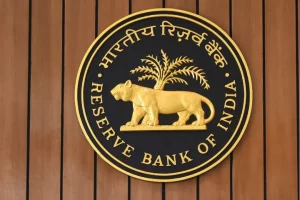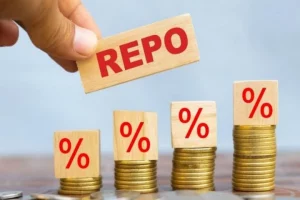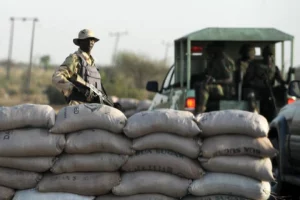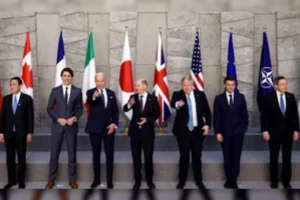The geo-political tensions ratcheted by China—encroaching upon Indian territory in May and assaulting Indian soldiers in June—continues to reverberate in Indian policy-making. India is making China pay back for its uncalled for behavior at the border by reducing the space for Chinese apps, products, imports, bidding processes and scrutinizing the role of Chinese companies in different sectors.
Almost every fortnight, India announces some form of economic retaliation against Chinese entities.
India has hit China where it hurts—economy. The same economic might that gave China the audacity to verbally intimidate neighbors and issue humiliating statements is taking a hit. Without making a song and dance about retaliation, India is slowly severing the deep Chinese tentacles in India.
<img class="size-medium wp-image-882 alignleft" src="https://indianarrative.com/wp-content/uploads/2020/04/IndiaChinaDelegationlowres-300×148.jpg" alt="" />
In the latest move, the Income Tax department conducted raids on Chinese individuals allegedly involved in money laundering. These individuals, in connivance with a handful of Indians, had used the cover of shell firms to open up 40 bank accounts and credited over Rs 1,000 crore. The raids found that illegal transactions involved Hong Kong and US currencies. The companies were opened under the garb of opening retail shops in Delhi and nearby cities.
Barely ten days before the raids, the government had taken measures to ensure that Chinese firms are kept out of participation in the auction of coal mines for the private sector. It announced that foreign direct investment (FDI) in commercial coal mining from countries that share a land border with India will require government approval.
India has liberalized its coal sector and has allowed for 100 per cent FDI in coal mining. The government recently initiated a tendering process for extracting coal in which both Indian and foreign firms have participated in large numbers. However, with the latest changes, companies from China will not be able to participate.
India is keeping up the economic retaliation. By the last week of July, the government had also cracked down on sub-standard imports and non-essential items. These cut across several sectors including toys, pharmaceuticals, chemicals and electrical machinery. As China is one of the biggest exporters to India, it is China that will be impacted.
<img class="size-medium wp-image-3009 alignleft" src="https://indianarrative.com/wp-content/uploads/2020/06/IndiaChinaTalks-300×200.jpg" alt="" />
Again in July, India banned the import of color television sets as China is the largest exporter followed by some of the south East Asian nations like Vietnam, Malaysia, and Hong Kong. India also fears that China has been pushing its products indirectly through some of these nations, and such imports too need to be brought under the lens.
The government also introduced the 'country of origin' tag for all products to be sold to the government. The same has been made mandatory for e-commerce portals for goods to be sold online in the country. The idea behind the 'country of origin' is to promote the use of goods manufactured in India. With consumers also keeping a watch for Chinese products, it will help them decide the product that they want to avoid, or buy.
Many pro-China experts and those favorable towards China had made fun of India for banning Chinese apps. They mocked India for its weak response by banning TikTok in retaliation to the serious Chinese assault in Galwan Valley. It was, in all probability, unfathomable for those commentators to realize that the Indian retaliation would be measured and mature. China, which crossed all decorum – by violating decades-old border protocols and humiliating India through its coercive voluble diplomacy – is paying economically.
The list of apps banned on security grounds and data privacy issues has gone up from the initial 59 to 106. India's ban, including on the wildly popular TikTok, is making other countries look at Chinese apps with apprehension and whether they should also follow India's footsteps.
<img class="size-medium wp-image-6571 alignleft" src="https://indianarrative.com/wp-content/uploads/2020/07/2928e421d9e62085c51b288d6c8a29f2-1-300×221.jpg" alt="" />The anti-China mood across the country is such that even the Confederation of All India Traders (CAIT) has launched a campaign ‘China Quit India’ to boycott Chinese goods. The traders' body says that there is an urgent need to check China’s growing footprint in India. It even issued a statement this week asking the government to investigate the money laundering racket involving Chinese nationals and Indian banks.
The slew of anti-China business measures by India has rattled China. Its own economy is down in the dumps owing to disruption in manufacturing, damage to supply chains, low exports, reduced inflows from an imperialist Belt and Road Initiative (BRI) initiative and rising unemployment. The two-month long floods which inundated most of the Chinese mainland have only added to the country's economic woes.
Every announcement that India makes on commerce and trade hits China. Every time India does so, other nations sit up and take notice on how India is showing China its place—bit by bit. What this also shows is China’s sub-standard geo-strategic thinking and its underestimation of Indian determination.
The fire-breathing dragon is scorching in its own fire as it loses out on India—a friendly country and a big market..



















